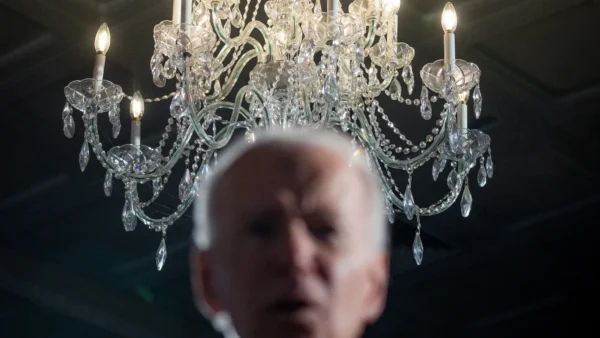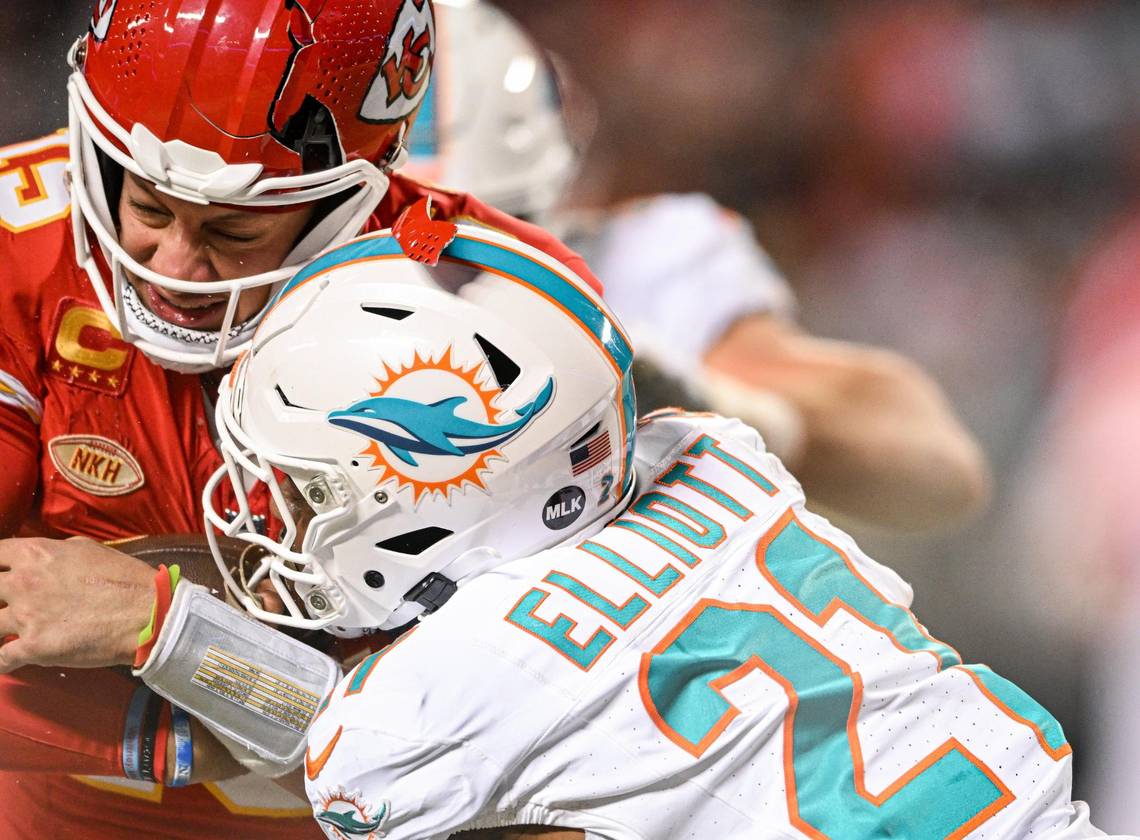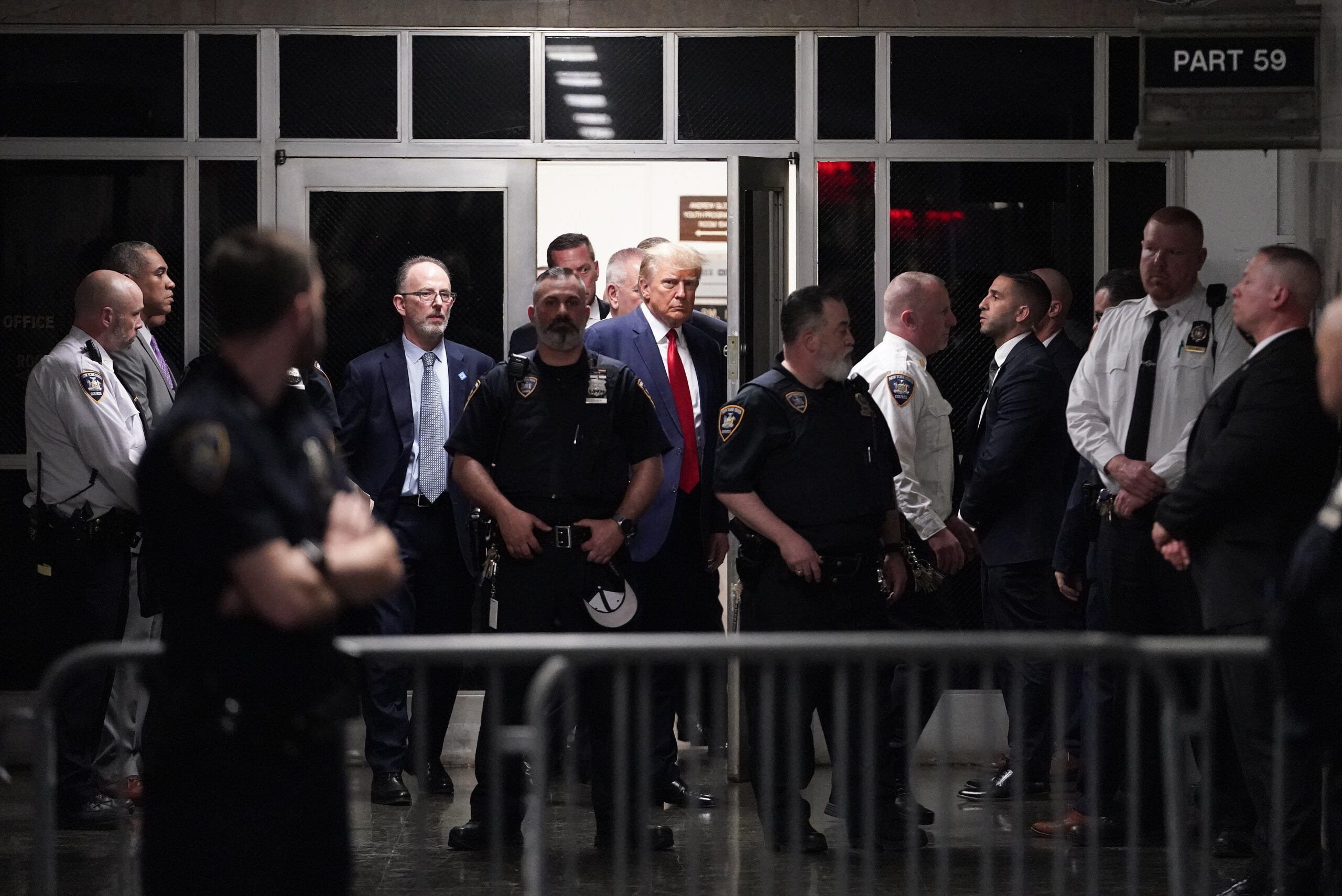We use cookies to help better serve your experience. Accept Cookies
Notes
Throwing Shade: The Disturbing Visual Fallout From the Special Counsel’s Attack on Biden’s Competency

Damon Winter/The New York Times/Redux
By Michael Shaw
We all know what special hell Special Counsel Robert Hur’s report unleashed.
But it’s not just the carefully chosen eight toxic words. Or the flood of news and commentary. It’s also the extraordinary visual imagery that has accompanied the coverage of the report, which, on the one hand, exonerated the President on the issue of classified documents yet, on the other, took the unqualified liberty to attack and attempt to discredit his cognitive faculties. Toxic articles are what they are. Images, on the other hand, act more subtly. This imagery has subliminally spread through the media like a virus, echoing and amplifying doubts about Biden’s faculties.
The photos take on a life of their own. Regardless of whether the articles defend Biden or take a more objective view, the photo editing all too often depicts Biden as distracted, confused, or struggling with his memory.

For example, an Associated Press story about the report stated that Biden and Trump make plenty of verbal gaffes without necessarily indicating signs of trouble. The article, led by this still of Biden in a quizzical pause, was published in over fifty online and broadcast outlets.
While writers may intend an unbiased perspective, photo choices tell their own story. This visual narrative threatens to shape public perceptions of Biden’s competence—images like those described below condition viewers to see Biden in an unflattering light. They include:
- Photos emphasizing Biden looking frail.
- Images of Biden that make him look confused, distracted, or confusing conflate his lifelong and well-documented stutter with an age-related struggle to speak.
- Photos of Biden with a hand on his forehead or looking downcast suggest fatigue or mental strain.
- Images of Biden gesturing angrily or forcefully evoking issues with geriatric impulse control or an age-related neurologic disorder.
- Photos of Biden in the dark or using black-and-white filters create the impression of isolation, vacuousness, absence, or exit.
The Most Vitriolic Imagery
Opinion pieces tend to use the most biting imagery, making liberal use of offbeat content. Many in the trade will argue the photo editor is doing an elegant job, but finding that drop-dead photo when slander underpins the subject matter strains the viewer’s ability to parse the innuendo. This is especially fraught in an era where media is rife with partisanship, both side-ism and the inflation of opinion posts creeping up the homepage because these fire-breathing pieces feed off controversy and are cheaper to produce.
The photo edit in this Atlantic editorial is a crystalline example:

The obscuration here is chilling. The lack of clarity, the fragmentation, and the quality of confusion (and even the weird headdress) make the connotation of a fuzzy-minded president look like a frame from a horror movie. The lighting contrasts with the obscured face of Biden, which evokes a President overshadowed or out of touch with the grandeur surrounding him. The chandelier, a classic and timeless piece juxtaposed with the blurred image of Biden, creates a contrast between the enduring nature of the presidency and the President’s transient, possibly fading presence.

I’m a fan of the unique photo editing of the New York Times Opinion section. At the same time, these are a bridge too far. The editorials, enabled by the Special Counsel’s competency assassination, present an unnerving association with the “sundowning” or “sunset syndrome” associated with Alzheimer’s and other forms of dementia.

Damon Winter/The New York Times
In the first photograph, the President has little to show for the presidential seal; his obscured features suggest “nobody home.” We witness a symbolic enactment of a cognitive eclipse, a leader there in body but not in mind.

Doug Mills/The New York Times
The second photograph is equally charged after the Special Counsel’s attack. Off-center between the four flags, the President’s back to the camera, this composition suggests a solitary journey, the immediate pathway as steep as it is dim. The focus on the space between the edge of the carpet and the stairway practically prompts you to think about traversing the distance as an accomplishment. Or that Biden has even forgotten where he is. As for the flags, the farther two form a passageway from a career of patriotic service to the “twilight years,” a “long goodbye” to a once-clear command.
Together, these images are not just portraits; in concert with their anchor text and the opinion articles, they are editorialized statements and visual stimuli that insinuate a narrative of decline. They are potent examples of how photography can be weaponized.

News photos from Biden’s press conference are shown in situ by American Conservative (image uncredited) and the National Review.
It’s a standing far-right tactic to equate Biden’s temper outbursts with dementia. This contradicts the point that Biden has always had a short fuse. (To say nothing of his rager of an opponent.)
The President’s response to the Special Prosecutor’s attack proved ample fodder for reinforcement. As just a couple of examples, you can see above how the American Conservative and the National Review had their choice of newswire options from Biden’s press conference as the President vented his anger. As just one choice quote from the National Review article: “[Biden] came off like an elderly relative who isn’t ready to acknowledge that he can’t live independently anymore.”
Lost in Space

This photo employs profound diminishment, like the disembodiment in the chandelier and presidential seal images. However, it’s blunter, less of an intrigue than a decapitation. Rather than contrasting Biden with another object, the blurry sky and the eerie whiteness around Biden’s face only heighten the disorientation. “Earth to Biden!”

Brendan Smialowski/AFP/Getty Images
There’s all that, but then there’s the prompt of the headline, which I guess inspired the photo edit. Of course, it’s Biden pate in marble! If the context shifts completely, it’s not to frame Biden as statuesque. Instead, the analogy frames Biden as an artifact of the past. In the growing heat of the presidential election, the takeaway is that: Biden is history.
With Friend Like These, Who Needs Enemies?

This is it if you wanted a classic example of how many words a photo is worth.
Turning the sympathetic headline into roadkill, the photo wipes out any humor or goodwill. Defense be damned. Ed Kilgore should be embarrassed by what the photo editors did to him and Biden–the grand slam photo, in the context of the attack on Biden, is simply an ageist hit job of daft grandpa in his sweater, as well as a conflating of old with demented.
Doing Justice: How Biden Deserves To Be Seen
Can we agree the most worthy visual narratives are more than just one note? Instead, they capture complexities and strike balances (if you’ll pardon the pun) between shades of grey.

The photo edit on this refreshingly non-partisan and clinically-informed New York Times Opinion piece following up the Hu hit job is simply outstanding.
The article discusses the misconceptions surrounding President Biden’s memory and age. It explains that forgetting is a normal part of aging and does not necessarily indicate significant cognitive decline. It also highlights the difference between minor retrieval failures and more severe memory loss, with Biden’s lapses broadly fitting into the former category. The piece suggests that concerns about Biden’s memory may be overblown and underscores the importance of evaluating his overall capability to perform presidential duties.

Doug Mills/The New York Times
The photo does that with elegance, giving equal weight to senior and statesperson. Far from showing a decline, the picture demonstrates Biden’s composure, focus, and preparedness. His upright posture, crisp attire, and sharp facial features speak as much to strength, capability, and clarity of purpose. The black-and-white format and contrast emphasize timelessness, dignity, and the gravitas of his office.
If it accompanied one of those damning headlines, the photo would still address political concern about Biden’s age. It is the image of an octogenarian. Without an object of his focus, the image accommodates questions of “where he’s at.” And the notes he’s cradling prominently with two hands can put themes of memory, age, and understanding into play more than they would in the image of a younger man.
Still, the portrayal demands a more thoughtful public discourse, not flame-throwing and hackneyed ageist stereotypes. Doug Mills’s portrait is complex and nuanced in the context of the political attack and practical concerns about Biden’s age. It reflects the true qualities of the man, the same shared by so many other older citizens in our society that are all too easily dismissed.
Ultimately, imagery carries its own rhetoric separate from text. The media bears responsibility for visual attacks furthering doubts about Biden’s competence. Persistent unflattering depictions prime viewers to see impairment regardless of factual reporting. Greater restraint in selecting balanced imagery is needed.
Likewise, the public must view news photos critically, considering the political context and potential partisan aims. As symbols speak volumes, recognizing underlying visual messages allows independent judgment.
With the stakes so high, Biden deserves visual narratives as nuanced as his character. The media and public alike should reject distorted stereotypes and ageism.
Follow us on Instagram (@readingthepictures) and Twitter (@readingthepix), and subscribe to our newsletter.
Topic
A curated collection of pieces related to our most-popular subject matter.


Reactions
Comments Powered by Disqus